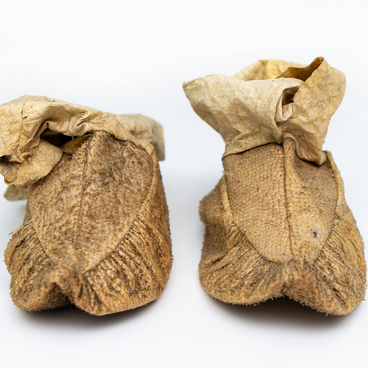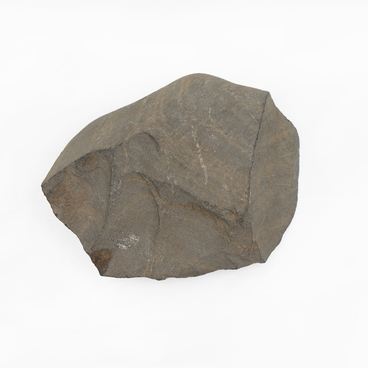The museum’s collection features a ground stone tool in the form of a bowl made of coarse-grained sandstone several thousand years ago. It has rounded and worn edges. The treated surface also has traces of abrasion. This is an ancient device for grinding grain.
Flour production is one of the oldest occupations of mankind. The emergence of the flour milling process in its most primitive form dates back to the era of the New Stone Age (Neolithic). 4000 years BCE, even before the emergence of organized agriculture, people who lived in a primitive communal system had already ground the grains of various cereal plants into flour using stones. Later, stone mortars were used to process grains, in which the grain was pounded with a pestle, but gradually people realized that it was easier to grind grain than to pound. This is how the mealing stone appeared, consisting of two stones: the lower one, on which the grain was placed, and the upper one, smaller in size. By moving the upper stone along the lower one, the grain was ground into flour.
Since the Neolithic, the mealing stone has become a mass-produced item. In its manufacture, stones of durable rocks were used: granite, basalt and sandstone.
The bottom stone, that is, the plate of the grain grinder, could be of any shape. The profile was characterized by a concave or trough-shaped form, which appeared during the operation of the object. At the same time, artistically decorated grain grinders in Central America often initially had a concave profile. This form appeared when working with a rubbing stone — the so-called “courant”. Regardless of its length, it could have any convenient shape, but archaeologists most often found oblong stones with a depression in the middle part and protrusions at the ends.
A mealing stone from the
museum’s collection was discovered on the territory of the Russian Far East, in
the Amur River basin. Here, as Soviet and Russian archaeologists found out, a
highly cultured hearth developed back in the Stone Age, which was facilitated
by natural geographical conditions.





